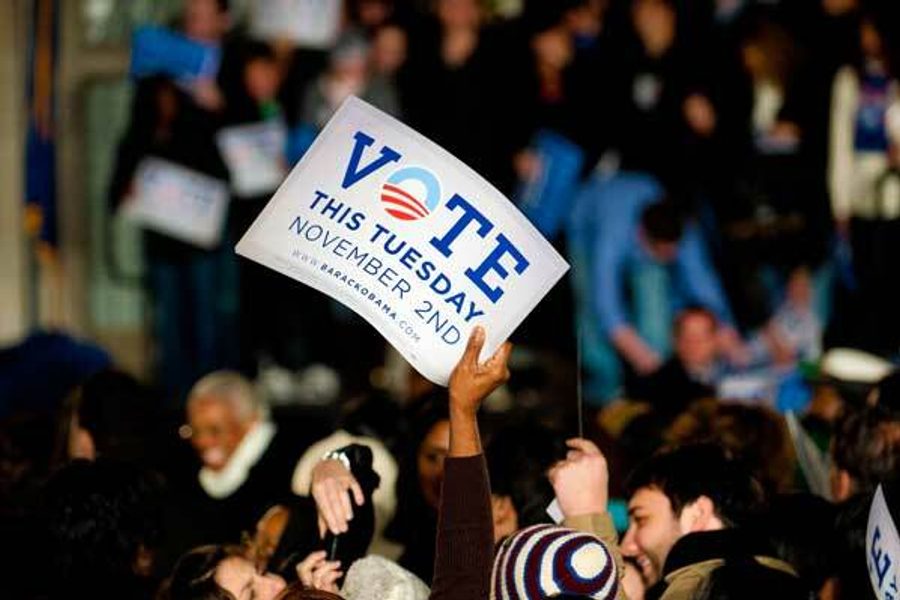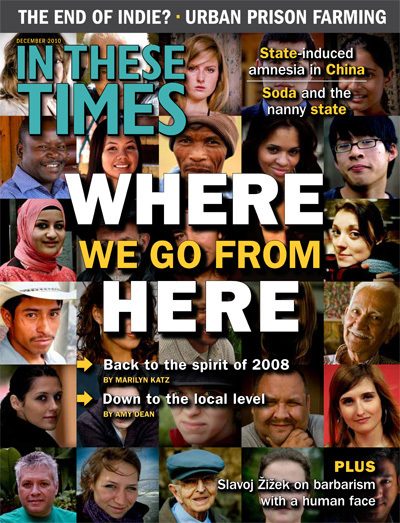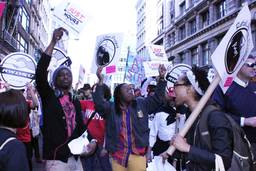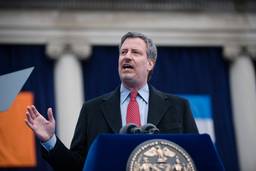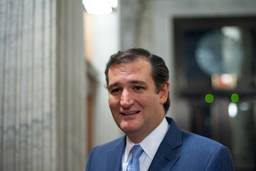The finger pointing and soul searching has begun. Most of this post-mortem discussion is focusing on a narrow period of time, asking what went wrong with the Obama administration during the president’s first two years in office. The real problem the country is facing, however, is better considered over the span of two decades.
In 1992, as in 2008, Americans elected a Democratic president after a long period of Republican rule. And like President Barack Obama, Bill Clinton created high expectations for change. Yet those who put a Democratic administration and congressional majority into office ended up seeing too little difference between the two major parties – especially on core issues of economic justice. Just as Clinton, once in office, proposed a failed, corporate-friendly healthcare plan, reneged on his vows that NAFTA would include serious protections for labor and the environment, and did not even consider labor’s demand for strikebreaker replacement legislation, Obama has too often embraced Washington horse-trading. Apparently believing that appeals to moderation and pre-compromised policy stances can substitute for political vision, he abandoned the public option in healthcare, made no moves to advance legislation that would expand the role of labor in the economy, and did not promote government spending significant enough to address the needs of people hit hard by the economic downturn.
Like the midterm elections of 1994, the November 2, 2010 midterms have provided a wake-up call for Democrats who should have learned long ago that they cannot defeat the right with a watered-down version of the right’s own positions.
This strategy has succeeded only in opening a vast gulf in American political life. On one side are Democrats in Washington who believe they are cutting the best deals they can for their constituencies. On the other are those working and middle-class people who actually make up this base and who have grown ever more disenchanted with the policies their elected representatives have delivered.
It would be easy to merely lament this divide and stop there. Yet two key developments are taking place that make the present moment different from the early 1990s and that provide important building blocks for bridging this gap: First, in the past decade organized labor and other progressive movements have built a political machinery for running electoral campaigns that is more effective and coordinated than ever before. Second, progressives are finding their voice at the local and state levels, scoring victories that demonstrate how policy can be changed in ways that concretely benefit working and middle-class communities. Together, these two developments can serve as the foundation of a revived progressive political program.
New election machinery
The labor movement is the institution on the left investing by far the greatest resources in political organizing – and its outreach goes far beyond union members alone. Hence, evaluating the strengths and weaknesses of unions’ existing political programs is central to considering prospects of a wider progressive effort. In the latter half of the ’90s, labor started to invest heavily in political campaigning.
In the 1998 midterms, unions spent just over $100 million on electoral efforts, according to the Wall Street Journal and the Center for Responsive Politics. By the 2006 midterms, when Democrats scored a sweeping victory at both state and national levels, labor invested well over twice that – a total of $271 million between direct contributions to candidates and election-related advocacy. Unions and their political action committees spent $450 million during the 2008 election cycle, when Obama was vying for the White House.
Not only did progressive movements spend more time and treasure on political campaigning, they overhauled their techniques for running effective field campaigns. Using new technology and hard-won experience in the “ground game,” they developed ways to make better use of voter file technology, more efficiently recruit activists to run campaigns, create savvy messaging for candidates, and ultimately turn out sympathetic voters on election day.
The establishment of this type of nuts-and-bolts political infrastructure was one of the things that made possible the Democratic surge at the polls in 2008. Yet Democrats make a mistake when they rely on electoral machinery that is powered from Washington. Two pitfalls in particular – the Democratic establishment’s neglect of the base between election cycles and its centralization of political strategy – contributed to this year’s midterm debacle, in which Republicans took control of the House and made major gains in the Senate.
A most dramatic example of the collapse of organizing efforts between electoral cycles is that of America Coming Together (ACT), an aggressive labor-based advocacy and get-out-the-vote operation led by Steve Rosenthal, former political director of the AFL-CIO, during the 2004 election cycle. With major financial supporters including George Soros, Peter Lewis and the Service Employees union (SEIU), ACT had 78 field offices spread throughout 12 swing states; it mobilized more than 50,000 people to canvass on Election Day. Yet despite an effort to keep the group intact after the elections, it folded completely within months. Its funders did not have a vision that extended beyond the drama of a big election year. “In an ideal world,” says Rosenthal today, “we’d have a progressive campaign that works year-round to create policy change and then gears up for election work. Unfortunately, right now, there is no permanent funding mechanism for progressive infrastructure, and without it, it’s very difficult to sustain operations.”
The absence of ongoing progressive mobilization also contributes to a lack of accountability on the part of elected officials. Joan Fitz-Gerald, president of the get-out-the-vote coalition America Votes, puts it this way: “A lot of people think an election cycle is about putting someone in office and then taking off their training wheels, sending them off and hoping that they do the right thing. Well, democracy is not a spectator sport. You have to be present for it. That means being a part of a permanent infrastructure that advocates.”
In addition to a lack of organizing between election cycles, much of the electoral machinery meant to mobilize the Democratic base runs campaigns from the top down. Organizing for America (OFA), was supposed to be a reincarnation of Obama for America – Obama’s famously grassroots and Internet-savvy campaign. Yet many activists who tried to remain engaged with the group found that they were asked to do little more than carry water for the administration’s initiatives, with priorities and talking points shipped in from Washington.
Ben Smith and Alex Isenstadt wrote in Politico, “Progressives blast OFA as a soulless, top-down machine that’s alienating the base.” And Micah Sifry blogged, “The local base of the Obama campaign had no meaningful say in the creation and structure of [OFA], and there is no evidence that OFA is actually driven by anything but what its DNC-paid staff and White House advisers want.”
Long-term, year-round
Even while lowest-common-denominator deal making carries the day in our nation’s capital, progressives are finding their voice at the state and local levels. By creating robust political programs that keep politicians engaged with social movement constituencies, these local progressives are providing a model of how to win even in difficult times – when national top-of-the-ticket candidates fail to inspire large numbers of voters.
I saw this in San Jose, where I worked as head of the AFL-CIO’s South Bay Labor Council (SBLC) from 1993 to 2003.This once-fractured organization has spent nearly two decades rebuilding its political program, and its long-term investment has resulted in an operation that runs year-round. Not only do area unions come together as a coordinated force, but they also work closely with community-based organizations and interfaith groups. They see their role not as endorsing the least-bad option among candidates, but rather developing their own policy proposals and finding candidates who will champion them.
Cindy Chavez, current executive officer of the SBLC and the executive director of Working Partnerships USA, explains the changes that have taken place:
The SBLC has undertaken to develop new policies rather than react to policies developed by someone else. We are constantly moving policy and that means we are constantly organizing to support it. And we are developing and training leaders who will advocate and implement it. The ongoing nature of the political work builds an institutional memory in our organization. We are working on some aspect of policy development, candidate training, training newly elected officials and organizing every single day. This is a much different approach than making elections the ultimate goal and leaving the daily work of governing as an afterthought.
The long-term results of this model have led to local victories that do not depend on the leadership of high-office candidates. In 2000, even as George W. Bush took the White House, the Silicon Valley Metro’s headline about local efforts read, “Labor-Backed Candidates Stomp Big Business Boys in Legislative Races.” This fall, even as Democrats faced defeats nationally, progressives in San Jose successfully ran three candidates for city council, trouncing a slate of competitors backed by the Chamber of Commerce.
A similar process of building political power from the bottom up has been happening at the state level in Oregon – producing impressive results even in the era of Tea Party ascendancy. There, the labor movement, working closely with community allies, was able to win a three-fifths majority in the state legislature in 2009, and in 2010 it successfully advocated a tax increase on corporations and families earning over $250,000 per year. The measure allowed the state to preserve essential public services amid the economic downturn. Following the victory, Patrick Bresette of Demos wrote:
The energy that fueled months of hard work by a broad and deep coalition of concerned organizations and individuals, with thousands of volunteers, endless door knocking, phone calls and conversations with neighbors was not merely a “soak the rich” anger, it was a deep concern for the future of the state…
As in San Jose, the Oregon victory was made possible by a sustained investment in building ongoing local political infrastructure, with the labor movement taking a leading role. Arthur Towers, political director of the 45,000-member SEIU Local 503, says, “Having institutional memory allows us to build local relationships from cycle to cycle that allows us to demonstrate our commitment to elected officials who take tough votes.”
In particular, labor has emphasized educating candidates by bringing them along on house visits during their organizing drives and by having union members themselves tell their stories to elected officials. “Because candidates work directly with our members they begin to feel connected to us,” Towers says.
The policy victories at the local and state level provided a standard by which progressives can define what a successful political program should look like on a grander scale. Yet expanding upon these victories requires national structures that do not dictate strategy from the top down, but rather provides resources for the coordination of bottom-up efforts.
Given that the labor movement has union locals in some 650 U.S. communities, spread through every state in the union, this network is a logical place to invest in creating lasting political structure. Local affiliates already contribute funds to their unions’ national political programs. Some may see field offices open in their communities during intense pre-election periods. Yet very few of them retain the capacity to run their own program. Lacking this, local endorsements become pro forma, with Democrats who are not true champions for working people treating the labor movement like an ATM. Rather than entering primary battles as a unified movement to secure candidates committed to making progressive constituencies partners in governing, unions’ endorsements are often disconnected from any larger vision.
Empower the base
Strides forward at the local level, combined with the potentials of a more sophisticated national political machinery, give hope for moving beyond the impasse that has plagued progressives in the electoral realm during the past two decades.
As with Jesse Jackson 20 years earlier, progressives organized in 2008 around Barack Obama as a charismatic leader. Yet the effort left behind little in terms of lasting structure that could allow delivery on promised changes. Groups reinventing politics at local, metropolitan, and state levels take a different tack. These groups insist that elected officials see their role as helping grassroots movements successfully mobilize and push forward their demands on an on-going basis.
“The most important question to ask before endorsing any candidate,” says Chavez, “is, ‘What will you do to increase the capacity of your base?’ “
Progressives would be wise to take this message to heart. Unless candidates and local groups alike are continually expanding the political space and generating the political will for reform, the difference between the next Democratic administration and this one will be just as little as the difference between Obama and Clinton. And unless the local base begins to lead and national politicians follow, 1994 and 2010 will only be two dates within a much larger litany of setbacks.
